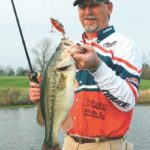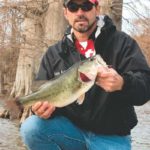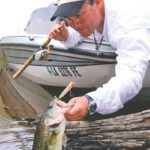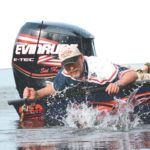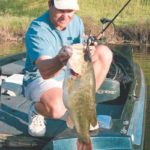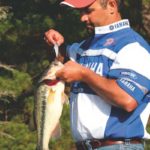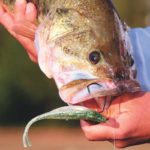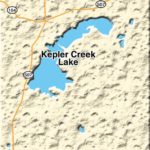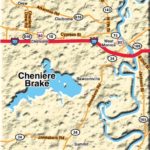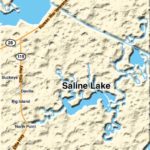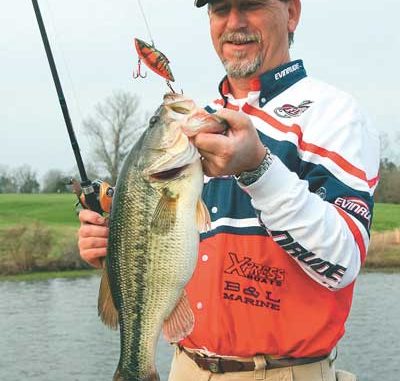
Anglers overlook these smaller bodies of water, but they hold some really big bass.
One of my platoon sergeants when I was in the Army stood maybe 5 1/2 feet tall after putting on his boots. At first glance, there wasn’t much to this fellow, a Fiat on a freeway full of Ford trucks.
However, it didn’t take me long to learn that there was more to this man than met the eye after he picked me up from my initial processing into my new assignment at Baumholder, Germany.
Little dog syndrome, little man syndrome — whatever you want to call it, my new boss for two years had it. Whatever he was lacking in size, he tried to cover up by physically asserting his presence, and he was good at it.
Several months later, after watching my aggravated platoon sergeant climb onto our sergeant major’s desk and proceed to kicking everything off until it was clean, I realized that he was the poster boy for all the clichés that had anything to do with big things coming in small packages.
The measure of a man isn’t based on what others can see from the outside. The measure of a man is based on things that can’t outwardly be seen. It’s what’s on the inside that counts. The same could be said for some of Louisiana’s bass fishing lakes.
What do all the most popular bass lakes in the Bayou State have in common? Based on Louisiana standards, I would argue that they are physically imposing reservoirs or rivers that command attention simply based on the fact that they look the part. Toledo Bend, Lake D’Arbonne, the Red River, the Atchafalaya Basin — they don’t lack anything in size or scope.
But did you know Louisiana is also home to literally hundreds of smaller lakes, bayous and ponds? However, unlike that little Chihuahua that yips its head off when a stranger approaches, these little lakes just silently sit there. That little dog won’t go unnoticed, but these little lakes often do.
Saline-Larto
Located just to the southeast of Catahoula Lake in Central Louisiana, Saline-Larto is actually a complex more so than a single lake. However, the maze of bayous and cuts that connects the two lakes causes anglers to view this fishery as a single unit rather than two separate bodies of water.
And for whatever reason, it doesn’t get near the publicity it deserves considering it has a reputation of producing lots of quality bass in the 4- to 6-pound range.
Perhaps Saline-Larto gets overlooked because it’s difficult to get to, but Southern Woods & Water host Porter Trimble from Pineville has his own ideas as to why anglers often pass it up in favor of sexier lakes.
“People think it’s tough to get around in Saline-Larto because of all the bayous and connecting waterways,” he said. “It’s kind of like a miniature Atchafalaya Basin in that regard because you can get turned around. With all the GPS units in boats these days, though, that shouldn’t be a problem for most anglers once they get on the lake.”
Although Saline-Larto can churn out 4- and 6-pound bass with amazing regularity, Trimble reported that there have been lots of 8- and 9-pound bass landed in the last few years. The fact that these large bass can be found in shallow water throughout the complex makes it pretty easy fishing as well.
Bass can be found spawning on the numerous cypress trees in 3 to 6 feet of water, and the emerging lily pads and hydrilla means there are lots of options for anglers who want to throw different lures. However, if you’re looking for a big bass, Trimble says it’s hard to beat a jig.
“Hit as many cypress trees as you can with a black/brown/amber jig with a watermelon craw,” Trimble suggested. “If you get over into Little Saline, which usually has clearer water, try a green jig rather than the black/brown/amber. I like the Money Maker Living Image skirt that V&M makes.”
Other than the jig, Trimble likes to throw shad-colored soft jerkbaits like the V&M Pork Shad or Zoom Super Fluke. He especially likes fishing them over grass as he is moving from tree to tree in areas where the cypress trees are more scattered than they are bunched together.
“Saline-Larto may not have the double-digit bass that lakes like Caney or D’Arbonne have,” Trimble said. “But for a lake that’s never been stocked with Florida bass, at least that I know of, it has lots of quality bass.”
Cheniere Lake
Tucked away in a discrete corner of West Monroe, Cheniere Lake is home to some really big cypress trees and even bigger largemouth bass. In fact, there are groups of cypress trees in the middle of Cheniere that are too thick for a boat to get into, and perhaps that’s what allows the bass to grow to double-digit weights.
“A normal kicker fish during a tournament is around 6 or 7 pounds,” said West Monroe angler Kenny Covington. “It’s really no different from lakes like Caney or D’Arbonne when you think about the number of people who fish those lakes compared to the few that fish Cheniere. There were a few caught out there last year that were over 10 pounds.”
Although Cheniere is home to some really big bass, Covington says people tend to shy away from it because they don’t know how to get around on the lake, and they feel like they may get lost. Whatever the reason this small lake often gets overlooked, Covington feels like there are double digit bass swimming around in it that have never seen a lure.
“The bass at Cheniere aren’t stupid,” Covington said. “Because the lake is hard to get around on, people tend to fish the same spots over and over — pressure zones I call them.
“Big bass know what’s going on, and they tend to get on the least-obvious spots within those pressure zones. Everybody looks at the cover the same way, and we all notice the same stuff. Look for the spots you think most anglers won’t even bother fishing.”
Covington prefers fishing a black/blue jig during the spring and a black/brown/amber one during the summer. The most important thing about fishing a jig at Cheniere is to make as quiet an entry into the water as possible, as the bass out there tend to suspend just under the surface rather than belly up to the bottom.
Propeller baits like the Devil’s Horse and Torpedo are also great topwater choices at Cheniere. Since the fish do suspend just below the surface, Covington says the key to the prop-bait bite is to get it as close to the tree as possible and to keep it there for as long as possible.
“And you can also catch some of the big bass by burning a double willow spinnerbait,” Covington said. “The largest bass I ever caught out there came on a 1/2-ounce Mr. Hooty double willow spinnerbait with a firecracker skirt. This is just the kind of spinnerbait you want to throw in clear water. I like to burn it up to the tree and kind of fade it down to where I can’t see it anymore as I pull it past the cypress knees.”
Kepler Creek Lake
Sid Havard of Simsboro believes that Kepler Creek Lake located about 25 miles south of Arcadia in North Louisiana is perhaps the most underrated lake in the whole state. A 24-pound limit of bass is what it took to win a local tournament this past February, and second place was 22 pounds.
“That’s some serious bass,” said Havard. “But hardly anybody fishes this lake. It’s a true sleeper because it doesn’t get much pressure because it’s in the middle of no-man’s land. You’ve got to be going there to find it. There are no rooms, no gas — nothing, except big bass.”
Kepler Creek Lake is made up of what most big bass lakes are made up of, namely sprawling, stump-studded flats, winding creek channels and lush grass beds. Put all that together with its lack of pressure, and you can see why the bass at Kepler get so big.
“That lake also stays pretty clear because it is a spring-fed lake,” Havard said. “It just doesn’t muddy up, but that means it takes a little longer for the water to warm up during the spring. By April, most of the bass will be finished spawning, but there will be a second wave of big ones that move up on top of the small humps to spawn.”
Havard says anglers should make sure to bring at least two different lures when they head to Kepler, a junebug or plum 11-inch worm and a Norman DD22 crankbait. The worm works great when fished around the stumps out on the grass flats in the northern part of the lake, and the DD22 is for fishing the creek channel bends in the southern part of the lake.
“Both of those kinds of areas are good for big fish,” Havard said. “But my favorite is fishing the DD22 at the ends of the log piles that fall off into the creek channel in the lower part of the lake. When they cleared the bottom, they windrowed a lot of the timber, and big bass love getting around those piles out at the edge of the channel.”
These are just three examples of what Louisiana’s small waters have to offer in the way of big bass. Surely there are some small lakes around you that are worth exploring. They may not wow you with what’s on the outside, but they will wow you with what’s on the inside. And isn’t that what really counts?
